In the summer 2012 I spend the summer school holidays biking the lovely island of Bornholm with my family: my partner, our two girls, of 9 and 6 at the time, and me. Having lived on the island some years ago, we knew most of the roads, and what we wanted to show the girls and to see again ourselves.
Bornholm is a pleasantly small island in the middle of the Baltic Sea. Around 36000 inhabitants living on an island meassuring 33 km on the longest length and 25 km the shortest. A full roundtrip on National Cycle Route 10 is 128 km, meaning you can manage it in one day – if you’re in a hurry. The short distances also makes it much more forgiving to the beginners or the forgetful, and lot more fun for youngsters, for whom a one-hour ride seems like a full days work.
In the end, we spend 12 days on Bornholm for our vacation, to be able to have plenty of resting days.
Bornholm features, as the only part of Denmark, genuine rocks, combined with rather large forests, a unique flora, and great beaches that make it stand out from the rest of Denmark. It also has build a reputation of being one of the best places for cycling holidays in Denmark. You find cycle path almost all way round the island, and disused rail tracks have been restored into bike tracks, passing through beautiful scenery with gentle climbs and curves, and undisturbed by car traffic, making it a comfortable ride.
Even though bike rental is affordable and reliable on Bornholm (and thus makes i possible to avoid the rather steep ticket price for carrying your own bike on the ferry), we brought our own everyday bikes. The kids carried their personal stuff (teddies, a notebook and rain clothes) in their own panniers. Actually, normal front panniers fit kids’ bikes rather well. We adults took the rest of the stuff. Tent and sleeping bags were put on a small bike trailer, to penalize the fastest going adult, making his speed somewhat slower.
Getting there (and away)
Bornholm is a relatively well connected island, especially in the season with daily ferries from Rügen in Germany, Ystad in Sweden and Copenhagen (Køge) in Denmark.
It is possible to bring bikes on all connections, although the Ystad-Rønne connection has limited space. The Bornholm CykelExpress provides cheap transport of bikes, kayaks and stuff.
The night ferry departs from Køge, 45 km south of Copenhagen, around midnight. Going to Køge from Copenhagen by bike is absolutely an option.
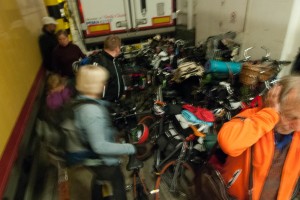
The cycle route through suburbian and industrial south Copenhagen qualifies to be among the most boring bikerides in the world. For the less fanatic, there are S-trains going every 10-20 mins. Accompanied by paying adults, kids and bikes go for free on the s-train.
All ferries arrive at Rønne. The night ferry around 6 am and usually you can buy a breakfast on board the ferry, and enjoy the view over Rønne before venturing out. If you prefer solid ground under your feet when eating breakfast, the bakeries of Rønne usually open at 7.30-8am.

Being the hub, and main city of Bornholm, Rønne is where you rent your bikes, stock up food and what ever you’ll need for the next 10 km. The smaller cities have shops catering for most of your everyday needs.
Setting the pace to high
Our ferry trip had been really exhausting. So after a quick breakfast on the main square, we left Rønne going north following the National Cycle Route 10 through the forest passing the rather amazing Ruby and Emerald lakes that have filled former quarries.
Traveling with kids, you can never make to many breaks. So after just 3 km we made the first break to go swimming. The beaches on the southern half of Bornholm are sand beaches, while the the northern beaches are mostly rocky and less suitable for bathing. The Baltic Sea is rather cold in the early summer, and after a quick dip, we continued to our lunch stop at the smokehouse in Hasle 10 km from our start in Rønne.
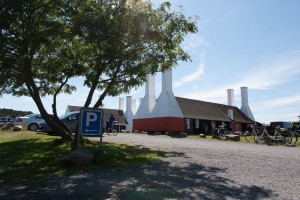
Herring is called the “Gold from the Baltic Sea”, and Bornholm owes lots of its former importance to the abundance of herring. Smoked herring is the “national dish of Bornholm”, and almost every town on the coast has at least one smokehouse serving a variety of smoked fish. The smokehouse in Hasle is a personal favorite.
After lunch we took some time to sleep and play on the nearby playground, then we continued north aiming to stay at a basic campsite just north of the port Vang. Making it a total of 20 km for the first leg. The the southern part of west coast of Bornholm is nice for beach fun, and you can stay in Rønne or Hasle, but we preferred to spend more time on the north coast.
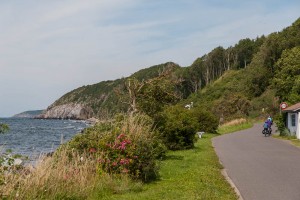
The stretch from Hasle to Vang is one of the most hilly parts of the cycle route, and just outside Hasle the fun begins with a descend of 20%. The gravel on the descend showed be a serious challenge, and some bandaids later we continued rolling carefully downhill to sealevel heading for the amazing rockformation Jons Kapel (“John’s Chapel”) for afternoon tea (eg. ice cream).
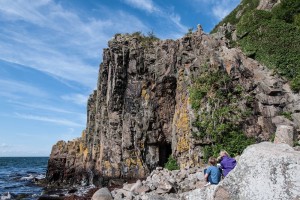
Just before Jons Kapel we are met with the propably most challenging part of the cycle route, when the road ends and the track turns into a set of stairs going 25 m up a steep hill. On bikes with luggage you must dismount and pull the bikes up the hill. Luckily, theres a bench at the top of the hill, and a small café 500m further along the route, where you can catch your breath, and get an ice cream before locking your bike and walking back and down another set of stairs to Jons Kapel. The lower chamber is flooded during high tide, so check the tides at the touristinformation before you go.
Around 5 pm we arrived – as some of the first – at the campsite, giving us the challenge of finding the right spot to put up the tent.
For the youngest, the day had been exhausting, so we decided to shorten the length of the stages from a max of 25 kilometre to a max of 15 kilometre – and to hurry the food for the evening. We had the time to do this – but even then it meant less days for excursions.
We chose this particular camp site due to its proximity to the “Castle heather” that is particular beautiful in the early summer, and the nearby Hammershus, despite being in ruins still is a impressive sight built on the edge of the cliff.
Near Hammershus you find twin-cities Allinge-Sandvig, both former fishing villages, now popular with urbanites from Copenhagen. The northern, Sandvig-part of the city, has campgrounds close to the beach, the southern has the supermarkets and cafees…
In the surroundings of Allinge-Sandvig you find the usual beach tourism thrills and also a working quarry museum (“Stenbrudsmuseet”) and the Route 10 passes by the remains of a large field of bronze age rock carvings on “Madsebakke” just behind the soccer fields of Allinge.
Continuing along National Cycle Route 10, following a short stretch of greenway then merging with the main road between Allinge and Gudhjem, you pass some of the spots unique in Denmark: At Døndalen you’ll find the tallest waterfall in Denmark, and just a few kilometers further you’ll find Helligdomsklipperne (“The Sacred cliffs”) where the new Art Museum of Bornholm is placed.
On the way, almost blocking the path to the cliff, the museum is a perfect spot for a break. The museum building is build over a stream, that is now running through the main corridor of the museum. It is housing a nice collection of Bornholms artistic heritage, having attracted light seeking artists throughout the last century or so.
Leaving the bikes locked at the bike parking makes sense. The paths are meant to be explored by foot, and occasionally unsuited for touring bikes.
The caves in the cliff are habitat for some rare spiders, and on the cliffs you can be lucky to see the only orchids growing in the wild in Denmark. The caves are accessible by a steep staircase descending down the cliff to a pier at water level.
From the cliffs you can go by boat to Gudhjem and back and see the beautiful shoreline from the sea side – they don’t carry bikes, so it is purely for sightseeing.
From Allinge to Gudhjem, the cycle route is rather hilly, and the city of Gudhjem is situated on the hill side with the road running above the city. In Gudhjem cycling is prohibited on some of the steepest roads, and ignoring the signs on a bike with luggage is not reccommended. The road are steep and narrow, and if you make it to the bottom you’ll find the harbour, with cafees and people walking around…
The hostel is bike friendly, and the very comfortable campsite is in the next bay from the harbour, close to the shore, and with a 500 meter footpath directly into the heart of the city.
After a couple of days in Gudhjem we continued along Route 10 heading for Svaneke. This part of the route is dotted with outlets and shops, from glass and antiques to teddy bears, but also some magnificent views.
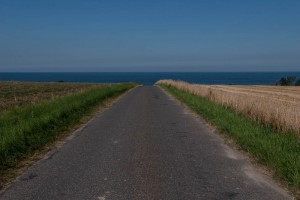
In Svaneke we decided to stay at the hostel – not because the campground was to far from the city centre, but because we on the way from Gudhjem already had experienced the first of the showers the weather forecast had promised would come the next days, and we found no reason not to stay dry. (The campground is just next to the hostel and closer to the beach).
Svaneke is the third largest city on Bornholm, but the one where things are happening. It has the one of the few buildings build in Denmark by Jorn Utzon, architect famous for the Sydney Opera House, but probably not for this landmark water tower.
One reason to stay in Svaneke is the local microbrewer, Svaneke

Bryghus, and spending an evening with a tasting platter of their latest brew. The food in the Brewhouse is usually nice, too.
The other reason is the fun park Joboland, where the kids can try water slides and other fun stuff. Visiting the park on a rainy day proved to be a great succes, since it was less crowded, and the lines shorter.
From Svaneke we planned to go straight to the classic, white beaches of Dueodde.
In my opinion, the route 10 from Svaneke to Nexø is very boring. The only thing worth continuing along the Route would be a visit at the smokehouse in Aarsdale, for which people travel to eat the “Saltstægte sild”, the salted, fried herring on ryebread with mustard and beetroots. Knowing what I would be about to miss with my detour, I took my bike a day earlier and set out to pick up some lunch boxes of the meal (but aquired taste).
If you absolutely dislike hills and fields, keep going the “10”, but other wise I recommend to take the little longer excursion inland.
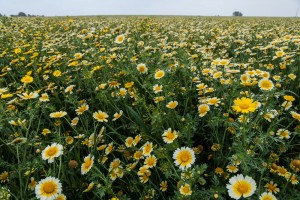
So, not missing a thing, we left the Route 10 and ventured in land to see the Great Rocking Boulder – a huge piece of rock, left on a flat rock surface by the receeding ice from the ice age, so that it now can be rocked by an average person. It dislocates from time to time, but it usually “works”.
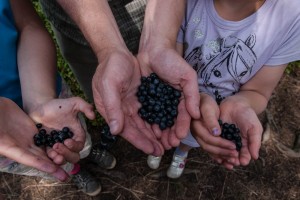
Going inland also means going “up”. Luckily the rocking stone is not on placed on the pinacle of Bornholm, 108 meter above sea level, but only half way to the top. But less is also noticeable. And to our luck, we found wild blueberries on the way. Finally, as “The laws of cycling on an island” say, that, having gone upwards to the middle of an island, there is a descend to help you the rest of the way.
Crossing the middle of Bornholm also emphazises the very compounded geology of Bornholm, where the northern half is rocky and “nordic”, the southern part is flat and very “danish”.
The beach of Dueodde is famous for its very fine, white sand, and wide beaches. It has been a favored beach for 100 years and was goal for some of the earliest danish tourists, and the sand has been used for sand tea timers, spreading the brand throughout Denmark.

The water temperature around Bornholm is rather “baltic”. The baltic sea is rather cool, and even after weeks of hot summer it remains a refreshing dip until late in the season. The shallowness of the water at Dueodde make it possible to actually enjoy bathing here. Making it a fun and safe beach for kids. Take note of Lifeguards warnings though.
After some days of beach holiday, we decided that we had had our vacation, and set for Rønne and home. This we would do in two or three stages. depending on how strong the head wind would become. We decided on two days in order to try some of the specialities of Bornholm.
Before we left, we had to try a lunch at the local gourmet restaurant, the Kadeau. The chefs have specialized in locally sourced food, and upgrading traditional dishes to a modern, fine cuisine. Their outgrowth in Copenhagen has earned a star from the Michelin Guide, but this is the relaxed vacation version, with a restaurant in a former beach kiosk, and you can bring a towel and have a dip in the ocean between the courses, or just enjoy the magnificent view over the sea and the amazing food. In the season the restaurant is open for lunch and dinner.
On the laste stages we were deviating from the “10” again, partly due to the strong head wind, and partly to see the Nature centre of Bornholm, where the unique nature of Bornholm is on display, as well at the dinosaur finds, that have been made, indicating that Bornholm – contrary to the rest of Denmark, has been land when the dinosaurs roamed the earth. The Nature Centre also arranges guided excavation tours, where you can try to find fossils yourself.
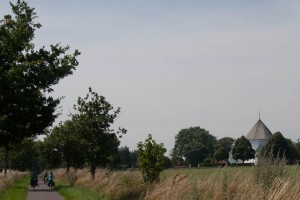
Our last stage, from Aakirkeby to Rønne is again a traditional greenway, a rail line put in to good use as a cycle way. Going straight a head, with few curves, passing one of the round churches, that Bornholm also is famed for.
Facts
Being a holiday island, booking in advance is advised, especially in the main season.
If you want to visit Bornholm in mid june (usually the second weekend in june), be aware that every possible accommodation in the in and around Allinge is fully booked due to a recurring political festival.
Basic nature Campsites are found all over Denmark. Many are free, but some charge up to DKr 25 per person per night. The sites are generally not accessible by car. The guide “Overnatning i det fri” is the comprehensive guide to basic camping in Denmark, where you’ll find maps and details for all campsites charging little og nothing per night. Being a basic campsite, there’s only the most necessary amenities: drinking water and a toilet, and you are only allowed to stay there for two nights in a row.
To plan the stages of our trip we used the map from the Cycling Guide for Bornholm, some maps from the local tourist information, the guide “Overnatning i det fri” and the online portal Cyclistic.dk
The Tourist Information on Bornholm is very cyclist friendly.

One thought on “Bornholm roundtrip with kids”
Comments are closed.